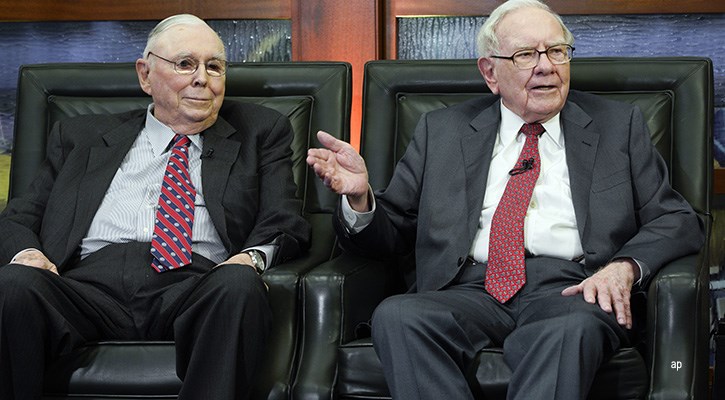
Last year, high yield bonds were punished as fears of a depression swept through many issuers of debt that is categorized as below investment grade. This year, the market benefitted from a significant tailwind of plummeting interest rates and issuers that proved to be more resilient than once thought.
The improved outlook still includes spreads over benchmark treasuries or government bonds that are at rock-bottom levels, contends credit specialist Ben Chim.
“Spreads are tight. We are now in the bottom 10 percentile, versus historical spread levels,” says Ben Chim, vice-president at Toronto-based TD Asset Management (TDAM) and lead manager of the $1.8 billion 4-star silver-rated TD High Yield Bond - F. “No one would call this market cheap. In terms of all-in yields, we have recently bumped off all-time lows, or very close to them.”
In the last 10 years, says Chim, the lowest yield for the benchmark Bank of America Merrill Lynch BB-B U.S. High Yield Index (hedged C$) was about 3.7%. “Today the yield is 4.1%. So we are not far from the bottom. And the lowest yield for CCC-rated bonds was 6.2%. At the end of June, the yield was 6.4%. Now we’re at 7.15%. So it is a little bit better.”
‘Pricing off’ the Shutdowns
When COVID-19 struck in March 2020, Chim explains, the bond market priced in the increased risk of defaulting issuers. “And for the high yield market specifically, there was the added concern of bonds that are very sensitive to certain factors were particularly exposed to the shut-down,” says Chim, a 21-year industry veteran who re-joined TDAM last April after working in fixed income management at Toronto-based firms such as Sentry Investments and Sprott Asset Management LP. In 2000, Chim earned a Bachelor of Administrative and Commercial Studies from the University of Western Ontario.
With commodity prices dropping significantly, sectors such as oil and gas and metals and mining suffered, says Chim. “We saw high yield spreads blow out quite dramatically. By the end of March, the spread over treasuries was about 875 basis points [bps]. The yield for the index was 9.25%.”
Fed Power
But as central banks intervened and slashed rates dramatically, the market saw a sharp reversal of spreads. “By June of 2020, spreads had already compressed down to 650 bps. The yield fell to 6.85%. There was a lot of volatility…but also a lot of opportunity.”
For investors in high yield, Chim notes, there has been a gradual improvement in credit quality. “Not only are earnings of companies recovering year-over-year, and close to where they were prior to the pandemic, but many companies are working hard to rebuild their balance sheets and are really focused on re-building their capital structures.”
The challenge is that spreads have dropped dramatically, to about 350 bps, and yields on average have dropped similarly to 4.1%.
“On the surface, that seems alarming. But you have to put this into context. A credit spread is not a reflection of what the market, or the economy, looks like today. It’s more an expression of what the credit market will look like for the next six to 12 months,” says Chim. “Going into 2020, there was a lot of talk of the credit cycle being long in the tooth. Expectations were that maybe a recession was going to happen in 2020, or later in 2021. In fact, there was a little bit of caution priced into credit spreads because there was a possibility of a recession. As we know, the recession happened sooner than anyone expected and was shorter than people expected. We are now in a very different backdrop.”
Silver Lining of Quality
Central banks, he notes, are still accommodative and monetary conditions are friendly. “The credit cycle is still in your favour. Corporations are not getting too aggressive and causing debt levels to become worrisome. We are at the point where credit quality is still improving and seeing more upgrades than downgrades. The default rate in 2021 may be below 1%,” says Chim. “Default rates will remain very low and that speaks to the benign backdrop for credit. So it makes some sense that spreads are a little tighter than going into the pandemic.”
Despite the challenges, TD High Yield – F has returned 7.35% year-to-date (Aug. 20) versus 3.02% for the High Yield Fixed Income category. In 2020, the fund returned 1.21%, compared to 4.67% for the category. Over the past five years, the fund had an annualized return of 5.12%, compared to 4.11% for the median fund in the category.
Commodity Prices Were Key
Chim attributes the fund’s strong performance this year to identifying attractive opportunities in sectors such as the oil and gas and metals and mining industries. “There were many credits that were particularly good value. They were decent operators with good assets who got ‘washed out’ because of the poor commodity prices,” says Chim, who is unable to name the companies because of compliance regulations.
“We were significantly over-weighted in those [oil, gas, metals and mining] sectors as we got into the recovery. Not only have commodity prices recovered but they have exceeded many people’s expectations,” says Chim. “It’s been a very strong year for commodity prices overall. That really helped us to out-perform.”
Adding that his team has focused on maturities under five years Chim says they have avoided the uncertainty of long-term corporate performance held in 10-year bonds. “No one knows what will happen in a five to 10 year period,” says Chim. “The further out you go, the greater risk. At the same, the compensation doesn’t get higher. The best value is in that five-year range where you have done your analysis and feel confident how the story will progress over that period. That’s where we have focused a lot of our efforts.”
Chim adds that he has gradually shifted out of the oil and gas and metals and mining sectors and increased the weighting of the BB-rated space. Currently, about 45% of the portfolio is held in those bonds, 40% B-rated bonds and 6% CCC-rated issues. The duration for the portfolio is 4.1 years, compared to 5 years for the benchmark. The running yield for the fund is 4.67%, before fees.
On a geographic basis, about 59% of the fund is held in U.S. securities, 26% Canada and the balance in markets such as The Netherlands and Luxembourg. There are 240 individual bonds and 130 issuers. From a strategic standpoint, Chim is running a neutral cash weighting of 3-4%. “It makes sense to have good exposure to credit given the benign backdrop.”
When researching the market, Chim looks for two prime attributes: the quality of the business and that of the management team. “As a buyer of a bond, you want to be confident of the company’s assets and its ability to re-finance the debt when it comes due. Those two are critical because your main goal is to avoid impairment,” says Chim. “Hand-in-hand with that is having a high-quality management team. They can maintain the value of the business and even improve its value. Ultimately, we want to be sure they are good stewards to all stakeholders and not just the bondholders. When all stakeholders are working together towards a strong outcome, those are the strongest credits.”
Eye on Strong Technology Bonds
In looking ahead, Chim says some of the better opportunities are in the high-quality BB-rated technology sector. “These are large-cap names that we all know and have very large equity values,” says Chim. “When you think of those values, relative to their debt, the bonds are very well-covered in terms of a recovery basis. So the risks are fairly low. But the opportunity is in these names, because their technology is at the point of achieving critical mass and scale, and starting to generate very good free cash flows. They are all ‘rising star’ candidates and likely to be upgraded to investment-grade in the near future as their cash flows grow very quickly.” These technology bonds mature in six to eight years, says Chim, and generate a yield of 220 bps over comparable treasuries.








:quality(80)/cloudfront-us-east-1.images.arcpublishing.com/morningstar/VYKWT2BHIZFVLEWUKAUIBGNAH4.jpg)












